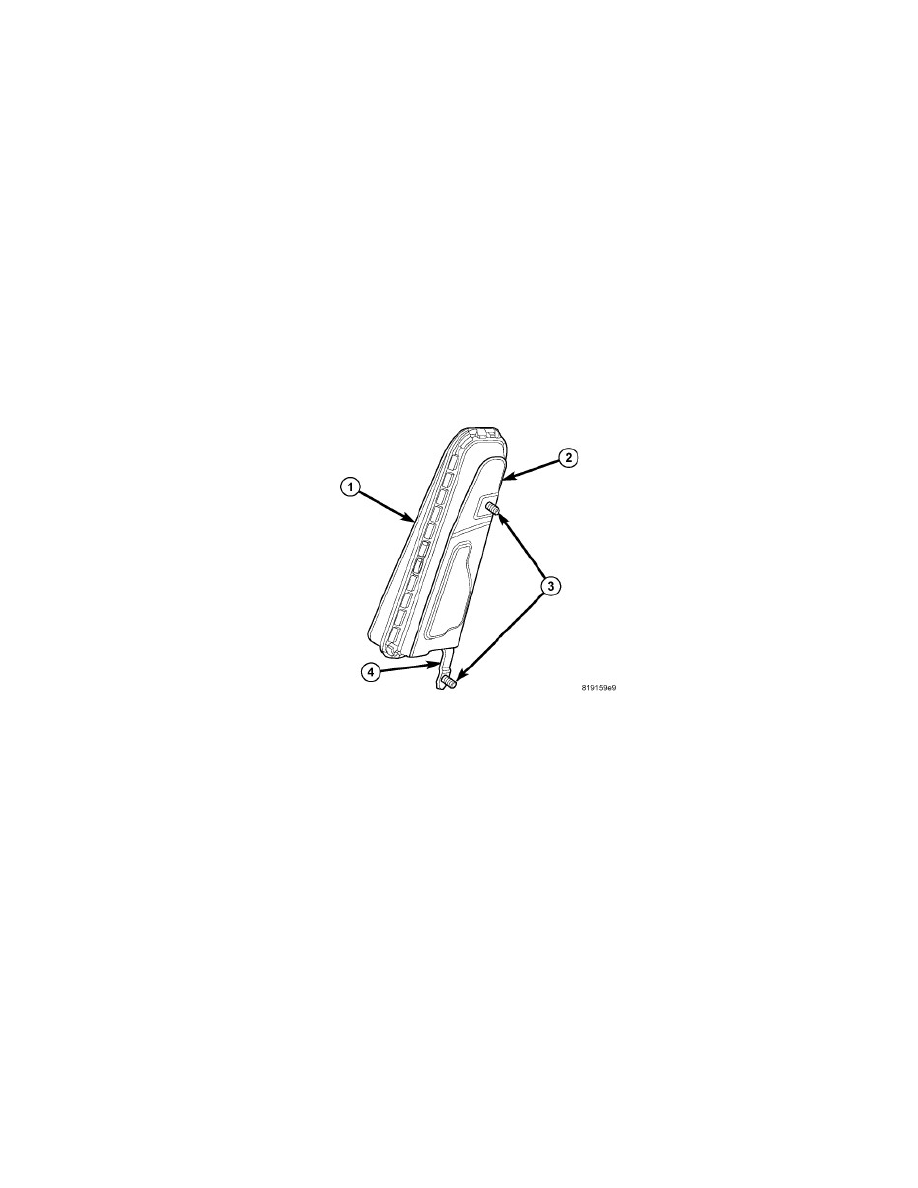Patriot 4WD L4-2.4L (2009)

squib 1 and squib 2 circuits to the two initiators in the airbag inflator. By using two initiators, the airbag can be deployed at multiple levels of force. The
force level is controlled by the ORC to suit the monitored impact conditions by providing one of several delay intervals between the electrical signals
provided to the two initiators. The longer the delay between these signals, the less forcefully the airbag will deploy.
When the ORC sends the proper electrical signals to each initiator, the electrical energy generates enough heat to initiate a small pyrotechnic charge
which, in turn ignites chemical pellets within the inflator. Once ignited, these chemical pellets burn rapidly and produce a large quantity of inert gas. The
inflator is sealed to the airbag cushion and a diffuser in the inflator directs all of the inert gas into the airbag cushion, causing the cushion to inflate. As
the cushion inflates, the passenger airbag door will split at predetermined tear seam lines concealed on the inside surface of the door, then the door will
pivot up over the top of the instrument panel and out of the way. Following an airbag deployment, the airbag cushion quickly deflates by venting the inert
gas through a vent hole in each fabric side panel of the airbag cushion.
Typically, both initiators are used during an airbag deployment event. However, it is possible for only one initiator to be used during a deployment due to
an airbag system fault; therefore, it is necessary to always confirm that both initiators have been used in order to avoid the improper disposal of
potentially live pyrotechnic materials. See: Service and Repair.
Proper diagnosis of the passenger airbag inflator and the passenger airbag squib circuits requires the use of a diagnostic scan tool. Refer to the
appropriate diagnostic information.
Seat Air Bag - Description
DESCRIPTION
The seat airbags (also known as thorax airbags) are completely concealed beneath the seat back trim cover on the upper outboard sides of both front seat
backs. These airbags are inserted into a sewn pouch on the inside of the trim cover, then secured to the seat back frame by nuts on two studs (3). One
stud is located on the stamped metal airbag housing (2), while the second stud is located on the stamped metal airbag lower bracket (4).
The folded seat airbag cushions are contained within a retainer wrap (1) constructed of the same material as the airbag cushion. The retainer wrap
completely encloses the airbag cushion and is engaged over the stud on the housing for retention. The airbag cushion is constructed of a coated nylon
fabric.
The airbag housing contains the airbag inflator and a heat shield. The airbag inflator is a single-initiator, pyrotechnic-type unit that is secured to and
sealed within the airbag housing. The seat airbag is connected to the vehicle electrical system through a dedicated take out of the seat wire harness with a
connector insulator that connects directly to the inflator initiator. The connector insulators are uniquely keyed and color-coded to ensure they can only be
connected to the initiator.
The seat airbag cannot be repaired, and must be replaced if deployed, ineffective, or in any way damaged. If the seat airbag is deployed, the seat back
frame, the seat back foam cushion, the seat back trim cover and the seat wire harness must also be replaced.
Seat Air Bag - Operation
OPERATION
Each seat airbag is deployed individually by an electrical signal generated by the Occupant Restraint Controller (ORC) to which it is connected through
left or right seat airbag line 1 and line 2 (or squib) circuits. The hybrid-type inflator assembly for each airbag contains a small canister of highly
compressed inert gas. When the ORC sends the proper electrical signal to the airbag inflator, the electrical energy creates enough heat to ignite chemical
pellets within the inflator.
